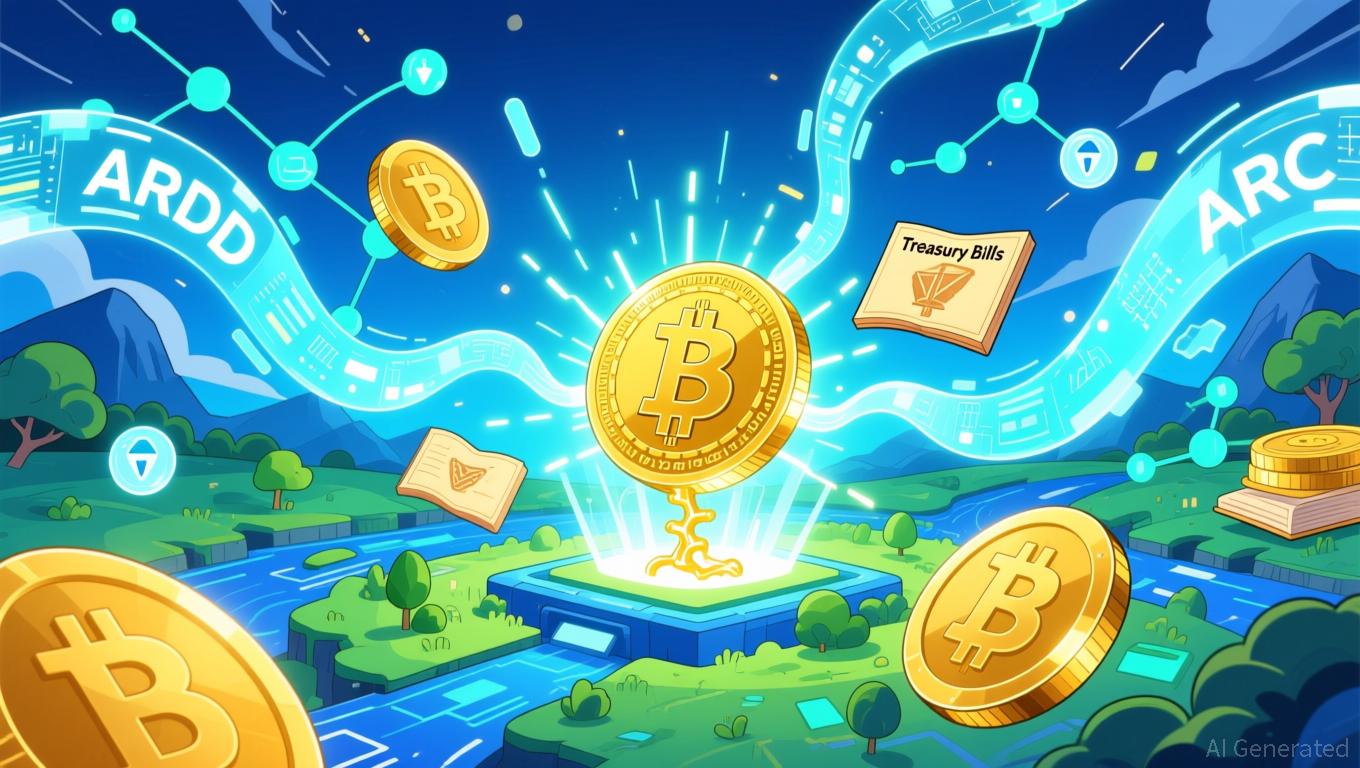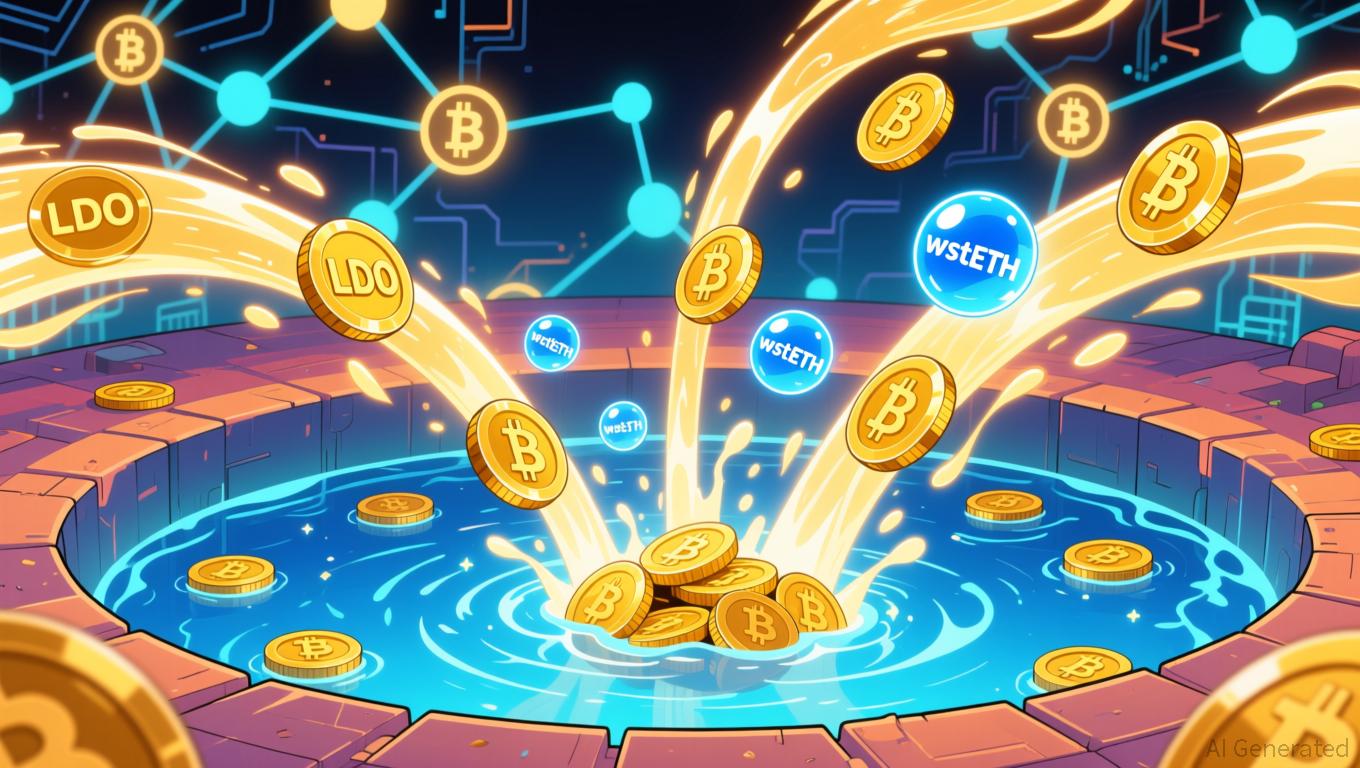Zcash Halving Event: Deflationary Dynamics and the Evolution of Cryptocurrency Valuation Approaches
- Zcash's 2024 halving reduced block rewards by 50%, triggering deflationary dynamics and reshaping market perceptions through Bitcoin-like scarcity models. - Privacy features (27% shielded transactions) and institutional adoption (Grayscale Zcash Trust) amplified Zcash's appeal amid 92% price gains post-halving. - 2025 PoS transition stabilized mining economics but risks miner consolidation as block rewards halve again to 0.78125 ZEC per block. - Zcash exhibited counter-cyclical price surges (750% in late
Deflationary Dynamics and Value from Scarcity
Zcash’s system reduces block rewards every 1,680,000 blocks, or about every four years, to control inflation and simulate the rarity of limited resources. The halving in November 2024 lowered block rewards from 3.125
Zcash’s deflationary appeal is further strengthened by its privacy options. Shielded transactions, which use zk-SNARKs to hide transaction details, made up 27% of all transactions in 2025, according to Bitget. This combination of limited supply and privacy has drawn a distinct group of investors, including institutions like Grayscale, which introduced a $137 million Zcash Trust in 2025, Bitget noted.

Mining Profitability and Network Stability
The halving has a dual effect on mining: it forces miners to adjust to smaller rewards, which may push some to depend more on transaction fees or leave the network altogether. Additionally, Zcash’s move to a proof-of-stake (PoS) system in 2025 has helped stabilize hash rate fluctuations, attracting larger institutional miners looking for eco-friendly blockchain options, Bitget reported. This transition has made the network more secure and reduced energy use, which is increasingly important as environmental standards tighten.
However, experts warn that the 2025 halving—which will cut block rewards to 0.78125 ZEC—could challenge miners’ ability to stay profitable. “The upcoming reduction will likely speed up the consolidation of mining pools,” one analyst observed, pointing out that smaller miners might find it hard to survive, according to Coinpedia. Still, the Electric Coin Company’s roadmap, which emphasizes privacy upgrades and DeFi integration, aims to counteract this by increasing transaction activity, Bitget reported.
Market Trends and Price Outlook
Zcash’s price movement after halvings has been unpredictable. Following the 2024 halving, ZEC climbed 92% by the end of 2025, but price swings continued. In late 2025, ZEC soared 750% from under $50 to $400 as Bitcoin’s price dropped and investors turned to privacy coins, Bitget reported. By early 2026, ZEC briefly surpassed $600—a seven-year peak—driven by retail enthusiasm and new institutional investment products, according to Coinpedia.
Technical analysts point to a “counter-cyclical” trend between Zcash and
Challenges and Regulatory Risks
Despite its
Additionally, not everyone is convinced by Zcash’s deflationary approach. Critics argue that simply reducing supply does not ensure price growth if demand fails to keep up. “Scarcity is a story, not a certainty,” one economist remarked, stressing that real-world use and adoption are key to maintaining value, according to Coinpedia.
Conclusion: Deflationary Strategy in a Changing Market
Zcash’s halving events highlight the increasing role of deflationary models in shaping cryptocurrency values. By merging Bitcoin’s scarcity principle with advanced privacy features, Zcash has established itself in a market that is more focused than ever on utility and compliance. For investors, the 2025 halving offers both promise and warning: while lower issuance could support long-term value, Zcash’s future will ultimately depend on how it navigates regulatory, technological, and market challenges.
As the next halving nears, attention will turn to whether Zcash can sustain its growth in a competitive crypto environment—and if its deflationary structure will continue to support its high valuation.
Disclaimer: The content of this article solely reflects the author's opinion and does not represent the platform in any capacity. This article is not intended to serve as a reference for making investment decisions.
You may also like
Between Major AI Advances and Divided Partnerships, Summit Aims to Address Supply Chain Challenges
- Global Procurement Summit in Amsterdam addresses supply chain resilience, AI infrastructure, and partnership risks amid economic uncertainty. - Nebius Group's $19.4B Microsoft deal highlights AI's role in scaling compute power for energy/manufacturing sectors, despite macroeconomic risks. - Marriott-Sonder partnership collapse over default underscores fragility of cross-industry collaborations and loyalty program disruptions. - C3.ai's 50% stock plunge and founder departure reveal procurement risks from

UK Crypto Showdown: FCA's Protective Measures Face Off Against Industry's Drive for Innovation
- Kraken's co-CEO Arjun Sethi criticized UK crypto rules for hindering retail investor participation and capital flows, citing excessive transaction friction and limited product access. - The FCA defends its 2023 financial promotion rules as necessary safeguards, requiring risk warnings and suitability checks, while enforcing stricter compliance against firms like HTX. - Coinbase countered by launching a UK savings account with 3.75% interest and FSCS protection, leveraging FCA VASP registration to compete
India's plan for a sovereign stablecoin disrupts the international cryptocurrency landscape through its dual-rupee approach
- India's government collaborates with Polygon and Anq to develop a sovereign-backed stablecoin (ARC) collateralized by G-Secs and Treasury Bills. - The "Twin-Rupee" model combines RBI's CBDC for settlement with private ARC tokens for transactions, balancing innovation and monetary control. - Polygon's institutional tokenization expertise and Anq's regulatory insights aim to reduce remittance costs and strengthen India's bond market liquidity. - The initiative counters foreign stablecoin risks by anchoring

Lido DAO's Contingent Repurchase May Set New Benchmarks for DeFi Treasury Management
- Lido DAO proposes $10M conditional buybacks for LDO tokens to boost liquidity and stabilize value. - Buybacks activate when ETH exceeds $3,000 and Lido's annual revenue surpasses $40M, using NEST for small trades. - Repurchased LDO is reinvested into wstETH liquidity pools via Aragon Agent, avoiding permanent token burns. - The anti-cyclical design preserves treasury resources during downturns, aligning with decentralized governance principles.
